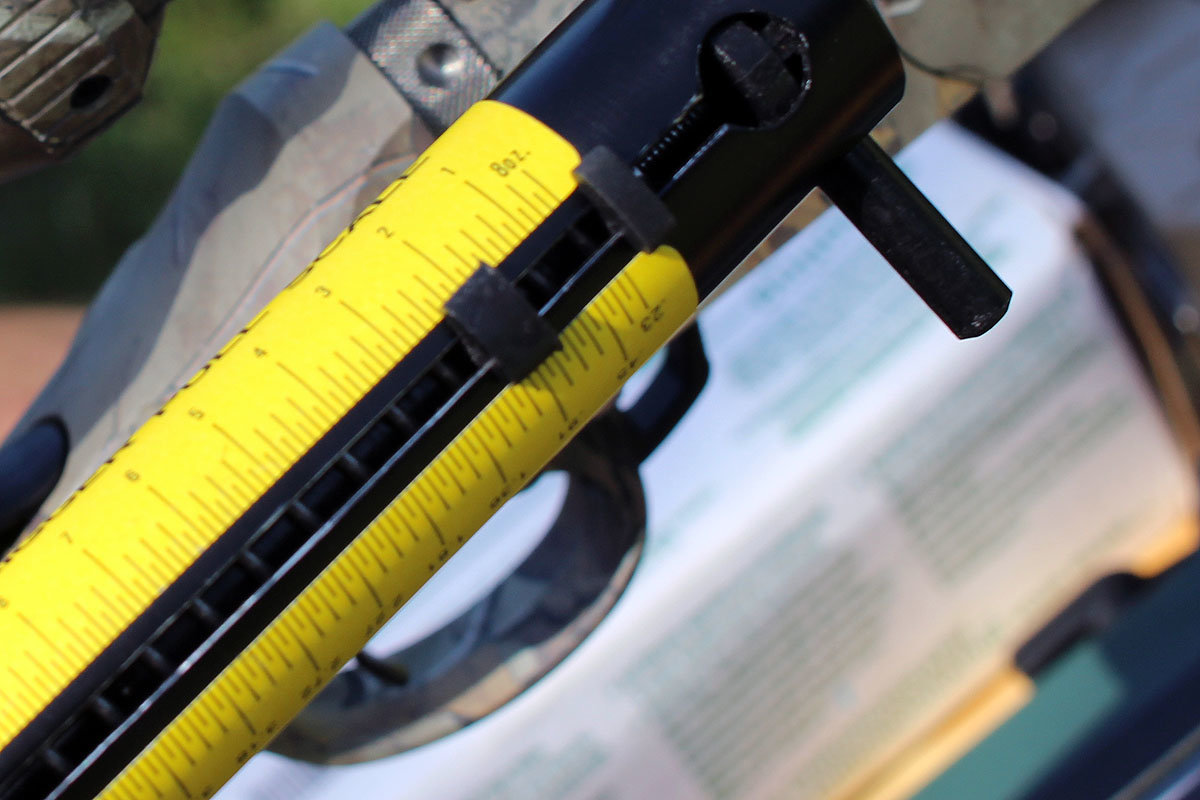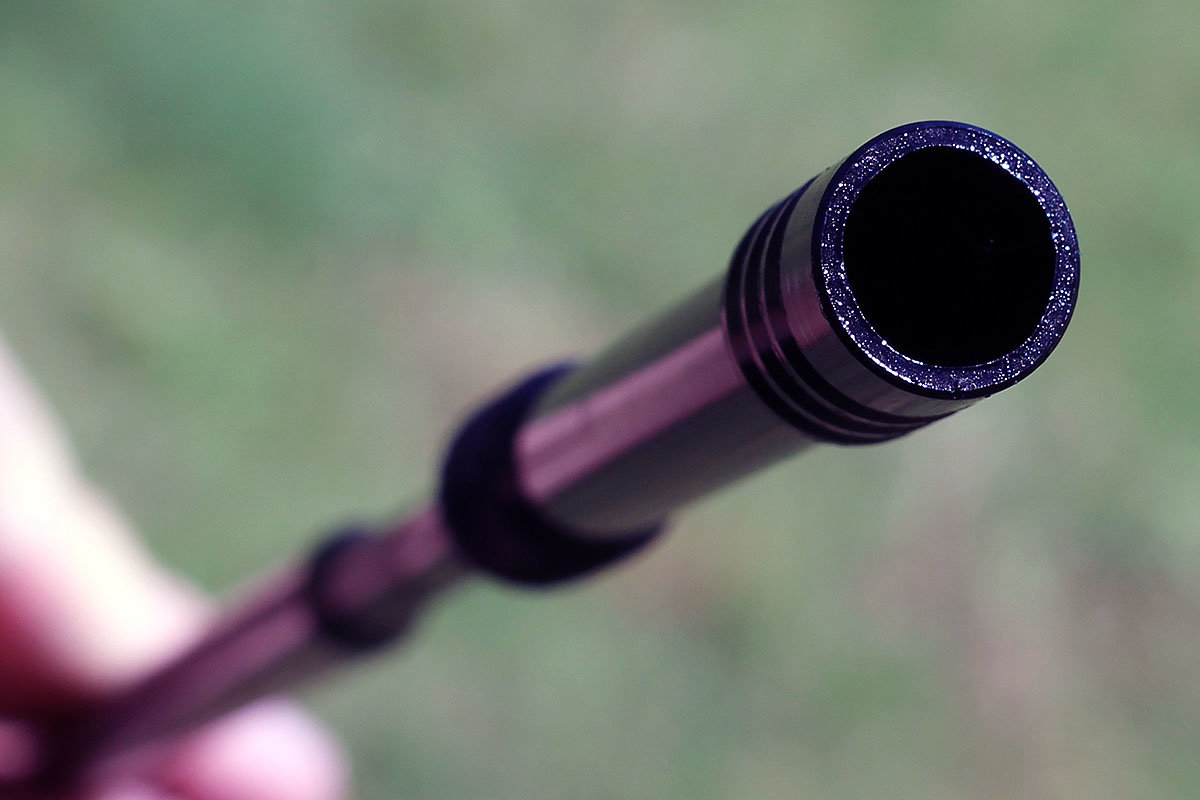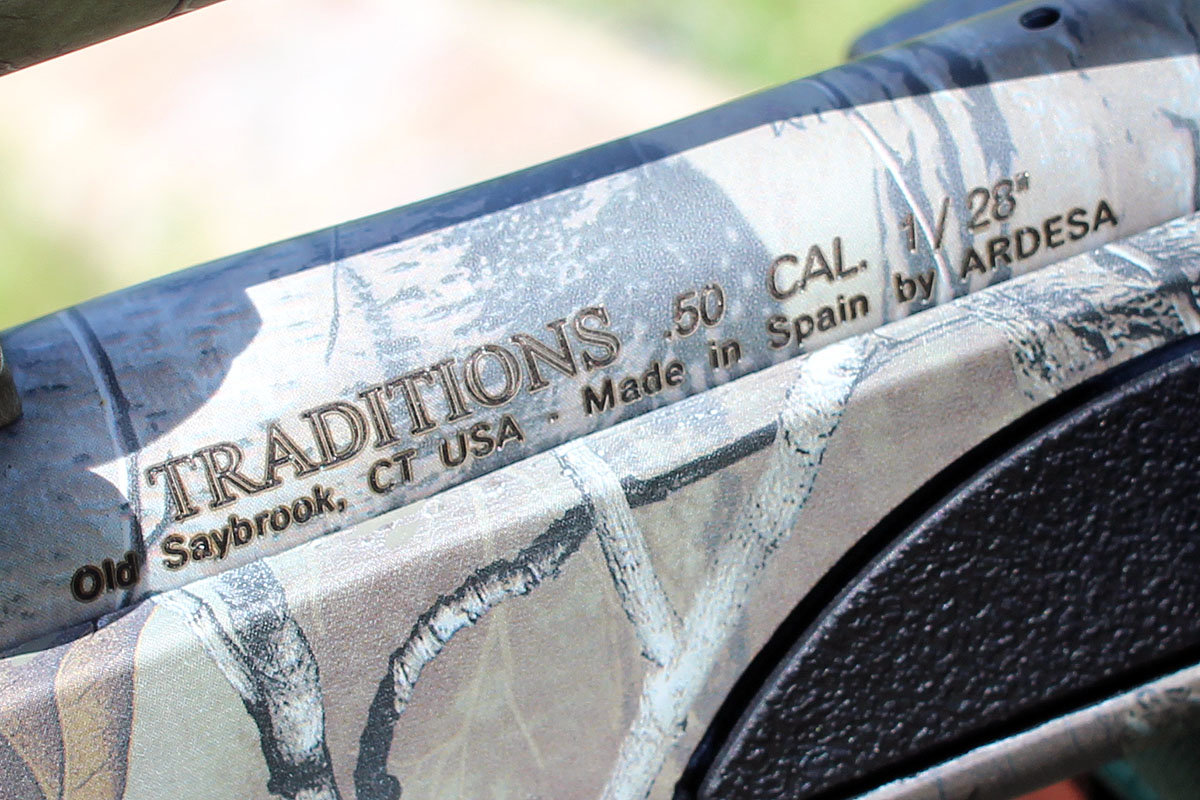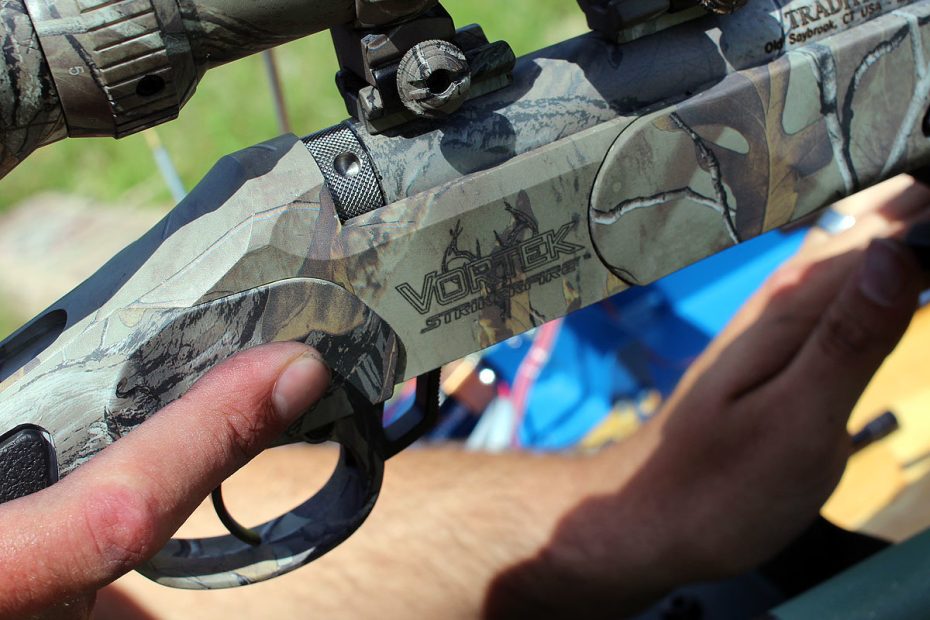[one_half padding=”0 0 0 0px”]
[track-link url=”https://www.traditionsfirearms.com/product/Vortek-StrikerFire-.50-cal-Realtree-Xtra-CeraKote-muzzleloader” campaign=”Traditions Vortek” target=”_blank”]
Traditions Vortek
[/track-link]
[/one_half]
[one_half_last padding=”0 0 0 0px”]
[track-link url=”/Search.htm?T=Traditions+Vortek” campaign=”
Traditions Vortek
” target=”_blank”]![]() [/track-link]
[/track-link]
[/one_half_last]

Most states now have a muzzle loading deer season on the books, and more and more hunters are taking advantage of this extra opportunity to get into the woods. Back when these seasons were first created your options for a rifle were pretty much limited to some form of historic gun. Think of the wooden stocked Hawken rifles or even reproductions of guns carried in the American Civil War. Now these guns work, but there has been at least a century and a half of technology that has left them in the dust of antiquity. Manufacturers have updated versions of black powder arms. And they keep getting better. The new Vortek from Traditions adds yet another modern system into the mix: it is striker fired.
An Evolution
I’m going to give us a bit of history on how the muzzleloader has evolved into what is most commonly used in the field today. To keep it within the scope of this review we are going to skip over the technological developments of flint and steel and wheel-locks, and start with the invention of the percussion cap. The development of the percussion cap is arguably the biggest invention in the firearms industry. Without this little piece of metal and a touch of fulminated mercury, Sam Colt could have never made men equal. We also would not have cartridges. For what is a primer other than a glorified percussion cap? The cap meant we no longer had to hit a rock on steel to make a spark. It sounds almost prehistoric to us today, but it was less than 200 years ago that we had a viable alternative to what was the pinnacle of caveman technology.

The early rifles that used the new percussion caps were more reliable than the old flint locks. But they were far from perfect. Most of the guns at the time relied on the sparks from the caps to travel quite a distance and make 90 degree corners to get to the powder. That alone makes for a slow ignition or a hang fire. It was with the modern muzzleloader that we finally saw a mainstream fix for this, the in-line system. It also allowed the use of an internal hammer making these rifles function more like their modern cartridge counterparts. No more hammers sticking off the sides of guns.
The Vortek
The new Vortek from Traditions packs 200 years of new advancements in muzzleloading technology into one slick package. It is an in-line gun, meaning that the cap or primer is pointed straight at the powder charge. No crazy angles for your spark to navigate here. It also has an easily removable breech plug. That makes cleaning a lot easier than the muzzleloaders of yore. But you still load it from the front. It is called a muzzleloader for a reason, and that is a requirement for the special hunting season. But the biggest thing that sets the Vortek apart from the other in-lines on the market is that it is striker fired. Yep, just like your GLOCK. Kind of. Well, not really, but you know what I mean.

There isn’t a slide to automatically set the firing pin like we see on striker-fired pistols. With the Vortek you manually set it using a sliding lever on the tang. It’s kind of like the tang safety on a Mossberg shotgun but bigger and takes some more power to move it.
This striker-fired system also comes with a great trigger. The example Traditions sent me for review breaks very cleanly at just over 2 pounds. It would be a great trigger on any gun much less one that is a muzzleloader.
Some of the old muzzleloaders have set triggers. You would pull one trigger to move the hammer off of one sear that had a hard pull. The hammer would now be resting on a very light sear. The problem with this is that it isn’t easy to decock from the set trigger. The Vortek allows you to unset its trigger, to use the terminology of the old guns. When you return the lever to its resting position it take the tension off the firing pin spring. It also decocks itself when you break open the breach. That’s a safety feature. Speaking of safety, the Vortek also has a traditional push button trigger safety.

By the Numbers
Traditions offers the Vortek rifles in a number of different set ups. Some come with open sights, some with scopes. All are .50 caliber. They have what is called the Northwest Magnum that adheres to the regulations in Washington, Idaho and Oregon. Some models come with a 28 inch barrel while others have a 30. They use 209 shotgun primers for ignition. With all of the variations they have you should be able to find one that will fit your local regulations and needs.
The example they sent us for review is one that comes with a premounted scope. It is a 3-9×40. The scope, too, is branded as a Traditions. The rifle has a 30 inch fluted barrel with a 1/28 twist to the rifling. It is outfitted with a Monte Carlo style stock. The whole rifle is coated in RealTree Xtra CeraKote that is applied very well. It has an MSRP of $650, but sells for significantly less.

Out of the Box
Before I even had a chance to take the Vortek to the range, I was rather impressed with it. The fit and finish are great. The trigger is smooth and crisp. When you break the action open, kind of like a double barrel shotgun, it feels smooth and locks up tight and solid. It is light for what it is. Even with the scope attached it weighed in at about 7 pounds.
One thing that really impressed me was how low the scope was able to be mounted. Most inline muzzleloaders still have an exposed hammer that needs to be cocked. The StrikerFire system on the Vortek eliminates this so the scope is able to be mounted lower. Shouldering this muzzleloader really feels more like a modern gun than any other I have tried.

Sighting in
Traditions says that the models with the scope have been sighted in at the factory. This one might have been skipped. It took two trips to the range to get it sighted in. Part of the problem is that this is a single shot muzzleloader. It’s not like you can shoot a 3 round group in 3 seconds. It takes some time to load one of these. Also factor in that this uses black powder or an equivalent and that is dirty. When I was sighting in and shooting groups I cleaned the barrel and breach plug after every 3 rounds. I could have probably gone to 4 or 5 before cleaning but I wanted to be sure that fouling was not the cause of any issues.
The first range trip, I started out at 25 yards. The shots were about 5 inches high and an inch or two to the right. I wasn’t too worried about it being high from 25 yards. This is a 50 caliber muzzle loader that is throwing a 250 grain bullet. I expected some drop at 100 yards where I planned to do most of the shooting for the review. After moving out to 100 yards, I couldn’t hit the target. We were shooting Birchwood Casey targets, 11 inches by 18 inches, and we weren’t hitting. I could not tell where I was missing. After firing 6 shots from the bench, I gave up for the day. It was noon by then, and damn hot.

Before returning to the range I reset the scope to its zero by counting all of the clicks then turning it back exactly half way. This thing has a lot of clicks, some 400 plus up and down and left and right. Each click is ¼ inch at 100 yards.
The second trip went a lot better. I brought a big sheet of cardboard with me to see where the shots were going. The first shot from 100 yards was about 2 feet low and a foot to the left. I started walking them in. The second shot was inches from the bull’s-eye. I hit the bull’s-eye on the fourth shot. After a good cleaning I then started shooting groups. The best group is just over 2 inches. Well under minute of deer kill zone.
Shooting
There is something nostalgic about making a huge cloud of smoke every time you pull the trigger. Even the Triple 7 powder left a cloud, although not as thick or smelly as the rotten egg black powder cloud. Once the rifle was sighted in it was really a pleasure to shoot. The recoil is not bad, especially when you consider how fast the triple 7 was pushing the 250 grain bullets.

Speaking of fast, I also did a little bit of crony work just to see what this thing was doing. I shot 3 rounds with traditional black powder and 3 using Hodgon Triple 7 50 grain pellets. The Triple 7 was surprisingly fast. I used 100 measured grains of black powder and two 50 grain pellets of the Triple 7. The black powder averages about 1,260 FPS and the triple 7 was 1,900. That is crazy fast for a 250 grain bullet out of a muzzle loader. It is going to wreck some whitetail.
Thoughts
Once I finally got the Vortek sighted in, it turned out a great performance. Sighting it in is a royal pain in the ass, if only because of the time it takes to clean and load. Taking a minute or so to load each round coupled with all the cleaning that is required due to the dirty burning powder takes a lot of time and some of the fun out of it. But this is not meant to be a fun range gun. This is a gun that is built to be used during a specific hunting season, the muzzleloader season. But this ain’t your grandpaw’s (Great-great-great would be more accurate) black powder rifle. This is a rifle with modern technology applied to what hasn’t been cutting edge in 150 years, and once you get it sighted in and loaded up, it works like any other rock solid, reliable rifle.
[one_half]

[/one_half]
[one_half_last]

[/one_half_last]
[one_half]

[/one_half]
[one_half_last]

[/one_half_last]
[one_half]

[/one_half]
[one_half_last]

[/one_half_last]
[one_half]

[/one_half]
[one_half_last]

[/one_half_last]
[one_half]

[/one_half]
[one_half_last]

[/one_half_last]
[one_half]

[/one_half]
[one_half_last]

[/one_half_last]
[one_half]

[/one_half]
[one_half_last]

[/one_half_last]
[one_half]

[/one_half]
[one_half_last]

[/one_half_last]
[one_half]

[/one_half]
[one_half_last]

[/one_half_last]
